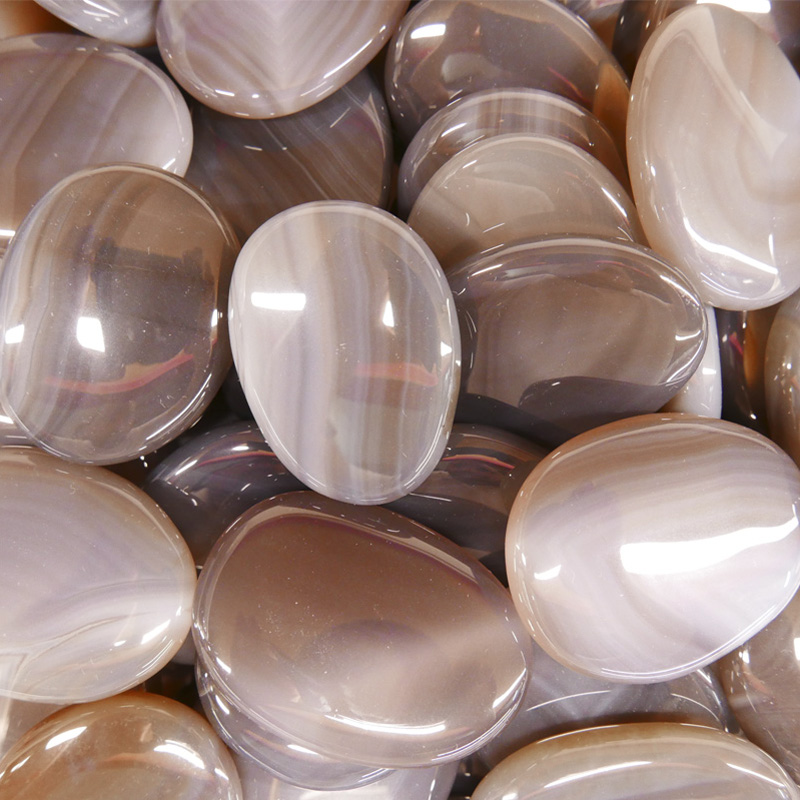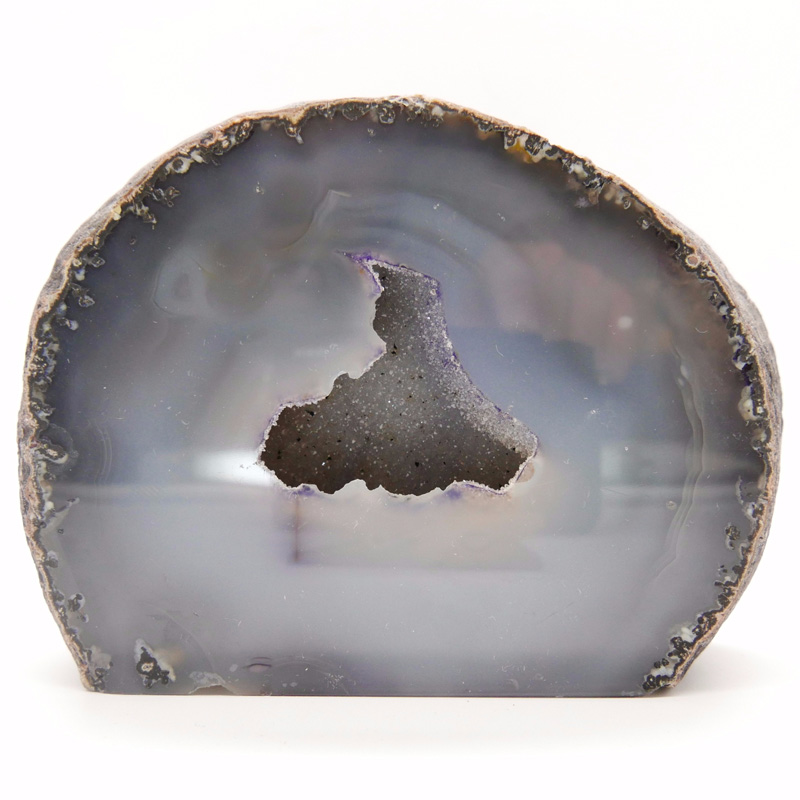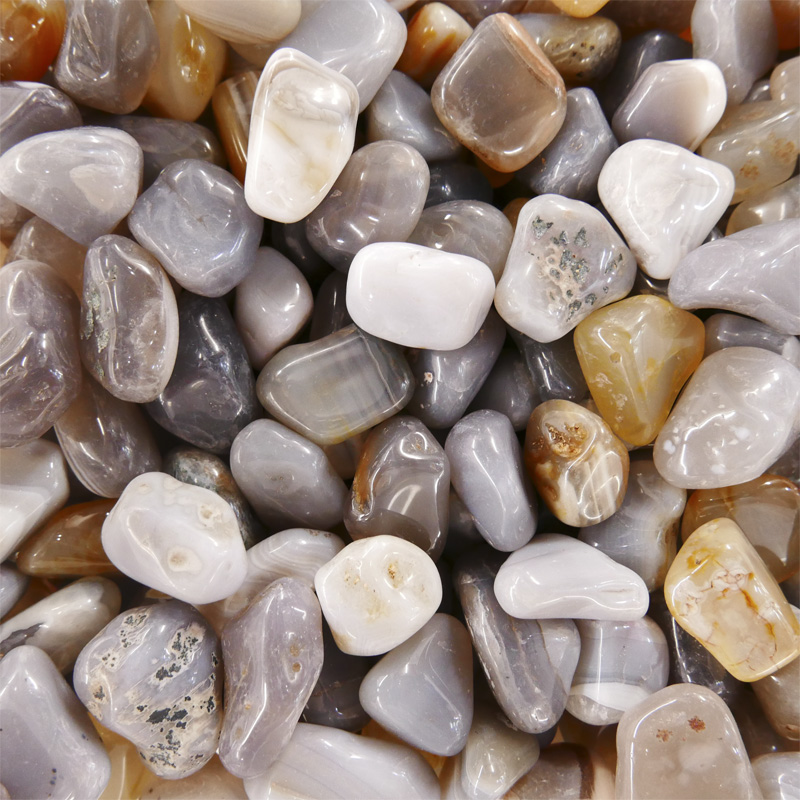


PHYSICAL PROPERTIES
- GROUP Silicates - tectosilicates
- COMPOSITION SiO2
- COLOR Colourless, white, yellow, grey, brown, blue or red
- CRYSTALLINE SYSTEM Hexagonal / trigonal
- CRYSTALLINE HABIT Cryptocrystalline
- HARDNESS 7
- FRACTURE Conchoidal
- EXFOLIATION Null
- SHINE Vitreous to cerulean
- STRIP White
- TRANSPARENCY From translucent to opaque
- SPECIFIC GRAVITY 2.7
- REFRACTIVE INDEX 1.53 - 1.54
MINERALOGICAL CHARACTERISTICS
The agate is a microcrystalline variety of the quartz, a type of chalcedony of various colors that usually have color bands. There are many types of agates, its color depends on the different materials it may contain. The most abundant are gray, although we also find them in yellow, orange, white, blue, brown and pink. As it is a porous mineral, it can sometimes be dyed with bright colors, as in the case of fuchsia agate, intense blue agate or dark green agate. .
The agate in its natural state usually occurs in the form of inclusions within ovoid or spherical cavities of volcanic rocks. When an agate geode is opened, crystallizations of quartz, from amethyst or from calcite.
Deposits: Brazil, Uruguay, Argentina, China, India, Madagascar, Morocco, the Czech Republic and the United States.
THERAPEUTIC PROPERTIES
The agate is considered a soft energy stone, known for bringing harmony and balance. It promotes self-confidence and concentration and favors spiritual growth, love and courage.
The agate is slightly protective when it is dark. At a curative level, it is said that placed on the forehead calms fever, and placed along the legs helps to eliminate liquids. The varieties of moss agate and dendritic agate are often used to put on plants to promote their growth and health.


